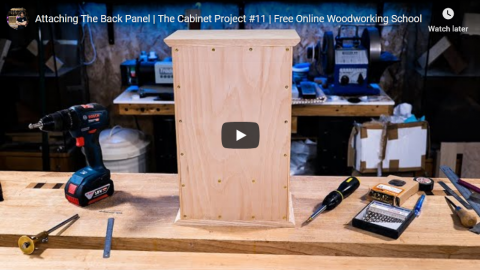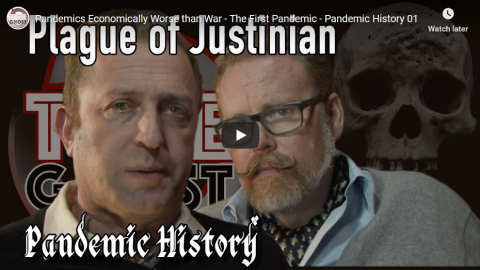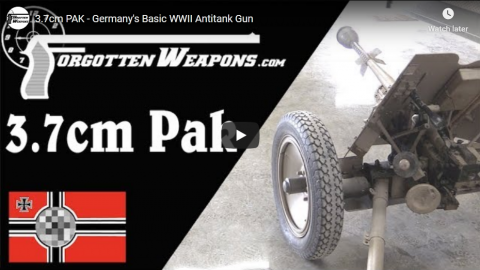Matt Estlea
Published 9 Apr 2020In this part of the project, I will show you how to attach the back panel of the cabinet to ensure no damage is caused to the edge of the plywood, and the internal faces of the cabinet.
See the full lesson here:
www.mattestlea.com/free-online-woodworking-school/how-to-attach-the-back-panel/Plans for this project:
https://mattestlea.com/product/cabine…Buy Pre-Planed Material Packs for this Project Here:
www.mattestlea.com/projectpacks_________________________________________________________________
Support what I do by becoming a Patron! This will help fund new tools, equipment and cover my overheads. Meaning I can continue to bring you regular, high quality, free content. Thank you so much for your support! https://www.patreon.com/mattestlea
Don’t want to commit to a monthly direct debit but still want to help out? That’s fine!
You can make a one time donation here: www.mattestlea.com/donate
You can donate us biscuits here: www.mattestlea.com/wishlist
_________________________________________________________________
BUY THE WOODWORKING BIBLE HERE:
www.mattestlea.com/the-woodworkers-manual
_________________________________________________________________SOCIAL MEDIA
Instagram: www.instagram.com/mattestlea
Twitter: www.twitter.com/mattestlea
Patreon: www.patreon.com/mattestlea
Pinterest: www.pinterest.com/mattestlea
LinkedIn: www.linkedin.com/in/matt-estlea-b6414b11a/
_________________________________________________________________
See what tools I use here: www.mattestlea.com/equipment
My Website: www.mattestlea.com
_________________________________________________________________My name is Matt Estlea, I’m a 24 year old Woodworker from Basingstoke in England and my aim is to make your woodworking less s***.
I come from 5 years tuition at Rycotewood Furniture Centre with a further 1 year working as an Artist in Residence at the Sylva Foundation. I now teach City and Guilds Furniture Making at Rycotewood as of September 2018.
If you’re interested in studying at Rycotewood, view their courses here:
www.mattestlea.com/rycotewoodI also had 5 years of experience working at Axminster Tools and Machinery where I helped customers with purchasing tools, demonstrated in stores and events, and gained extensive knowledge about a variety of tools and brands. I discontinued this at the start of 2019 to focus solely on video creation and teaching.
During the week, I film woodworking projects, tutorials, reviews and a viewer favourite ‘Tool Duel’ where I compare two competitive manufacturers tools against one another to find out which is best. I also have a Free Online Woodworking School which you should definitely check out!
www.mattestlea.com/school
I like to have a laugh and my videos are quite fast paced BUT you will learn a lot, I assure you.
Lets go make a mess.
April 11, 2020
Attaching The Back Panel | The Cabinet Project #11 | Free Online Woodworking School
Pandemics Economically Worse than War – The First Pandemic – Pandemic History 01
TimeGhost History
Published 10 Apr 2020There is much we can learn from past pandemics, like how Emperor Justinian ruined the Eastern Roman Empire’s economy and made the first plague pandemic even worse.
Join us on Patreon: https://www.patreon.com/TimeGhostHistory
Hosted by: Indy Neidell and Spartacus Olsson
Written by: Spartacus Olsson
Directed by: Astrid Deinhard
Executive Producers: Bodo Rittenauer, Astrid Deinhard, Indy Neidell, Spartacus Olsson
Creative Producer: Joram Appel
Post-Production Director: Wieke KapteijnsResearch by: Spartacus Olsson
Edited by: Spartacus OlssonArchive by Reuters/Screenocean http://screenocean.com
A TimeGhost chronological documentary produced by OnLion Entertainment GmbH.
From the comments:
TimeGhost History
3 minutes ago
As announced, here is the first instalment of our impromptu series on the history of pandemics. Now, as you will see in the video this is not just a reaction to the current COVID-19 pandemic, but very much back to the roots for us. Indy studied the pandemics extensively back in university times, and to study history in general requires a somewhat morbid fascination with human disaster in general. So we have spent many, many years looking intently at the worst disasters that have befallen humanity — and there is nothing worse than disease, especially on a pandemic scale. Hopefully this is the time when we can share a bit of that amassed knowledge to add a little timely understanding of the greater effects of pandemics, beyond the immediate tragic medical ones, like how they have impacted society, the economy, and human life in general throughout history. While we cannot give you fixed schedule for this series (we have the regular programming to take care of) we will try to come out with the next one very soon.A note on a statement I make in the video: when I say COVID-19 might be the first time we successfully fight back a pandemic, I am saying that fully aware of the eradication of small pox and the near eradication of polio, the flu vaccine successes and so on — but that is avoidance of recurring pandemics of a specific kind and we have made more progress there than actually handling pandemics of a new disease when they break out for the first time. On that note, take care, stay safe, and may you be healthy despite these trying times.
Spartacus
3.7cm PAK – Germany’s Basic WWII Antitank Gun
Forgotten Weapons
Published 10 Dec 2019http://www.patreon.com/ForgottenWeapons
Cool Forgotten Weapons merch! http://shop.bbtv.com/collections/forg…
Germany developed its first 37mm (or as German designations put it, 3.7cm) antitank gun in the last months of World War One; a very simple design built using barrels from obsolete Hotchkiss revolving cannons. In the mid 1920s, the concept was reinvigorated by Rheinmetall, which developed a much more modern 37mm gun using a much larger and higher-pressure case (37 x 249mm). In its initial pattern, the Tak as it was called (Tankabwerhkanone) has wooden spoke wheels and no suspension, intended for transport by horse. A small number were made for the German military (to avoid aggravating the conditions of the Treaty of Versailles), and the gun was sold commercially by Rheinmetall. The Soviet Union in particular was interested, and used the 3.7cm Tak as the basis for its later 45mm antitank gun.
Between 1934 and 1936, a number of changes were made to the design. The wooden wheels were replaced with steel wheels and pneumatic rubber tires, and spring suspension was added to allow the gun to be towed at higher speed by motor vehicles. The designation also changed at the time from Tank-abwehrKanone to Panzer-abwehrKanone, as the new term “panzer” entered German military parlance. Under Germany’s 1930s rearmament program, the Versailles limitations were ignored, and Pak production took off. By September of 1939, the German military has some 11,200 of the guns in service. They were solid dependable guns at the beginning of World War Two, but became obsolete by 1941 as tank armor began to rapidly increase. A new tungsten-core AP round was introduced in 1940, and a rifle-grenade-like hollow charge munition (the Stielgranate 41) added in 1941, but there was stopgaps at best. The last few 3.7mm Paks were built in early 1942, as both it and the 50mm Pak 38 were phased out in favor of the 75mm Pak 40 antitank gun.
There is an excellent article on the development and use of the 3.7cm Pak at Tank Archives: http://tankarchives.blogspot.com/2016…
I’d like to thank DriveTanks.com for giving me the opportunity to bring you their 3.7mm Pak! They have a very cool collection of armored vehicles, artillery, and machine guns available for rental in Texas; check them out: http://www.drivetanks.com
Contact:
Forgotten Weapons
6281 N. Oracle #36270
Tucson, AZ 85704
QotD: Zhou Enlai’s famous “too early to say” comment on the French Revolution
When Chinese premier Zhou Enlai famously said it was “too early” to assess the implications of the French revolution, he was referring to turmoil in France in 1968 and not — as is commonly thought — to the more distant political upheaval of 1789.
So says a retired American diplomat, Charles W. (Chas) Freeman Jr., who was present when Zhou made the comment during President Richard Nixon’s visit to China in February 1972.
Freeman, who was Nixon’s interpreter during the historic, weeklong trip, made the disclosure last week during a panel discussion in Washington about On China, the latest book by former Secretary of State Henry Kissinger.
The discussion was moderated by Richard McGregor, a journalist and China expert who wrote about Freeman’s comments for the Financial Times of London.
In an interview yesterday, Freeman elaborated on his recollection about Zhou’s comment, the conventional interpretation of which is frequently offered as evidence of China’s sage, patient, and far-sighted ways. Foreign Policy magazine, for example, referred last month to that interpretation, saying the comment was “a cautionary warning of the perils of judgments made in real time.”
The Washington Post‘s recent review of Kissinger’s book likewise referred to the conventional understanding of Zhou’s remark.
Freeman described Zhou’s misconstrued comment as “one of those convenient misunderstandings that never gets corrected.”
He said Zhou’s remark probably was made over lunch or dinner, during a discussion about revolutions that had succeeded and failed. They included, Freeman said, the Prague Spring of 1968 and the Hungarian uprising of 1956, both of which the Soviet Union crushed.
He said it was clear from the context and content of Zhou’s comment that in saying it was “too early to say” the Chinese leader was speaking about the events in France in May 1968, not the years of upheaval that began in 1789.
Freeman acknowledged that the conventional interpretation makes for a better story but added that it was “absolutely clear” from the context of the discussion that Zhou was speaking about 1968.
W. Joseph Campbell, “‘Too early to say’: Zhou was speaking about 1968, not 1789”, Media Myth Alert, 2011-06-14.






